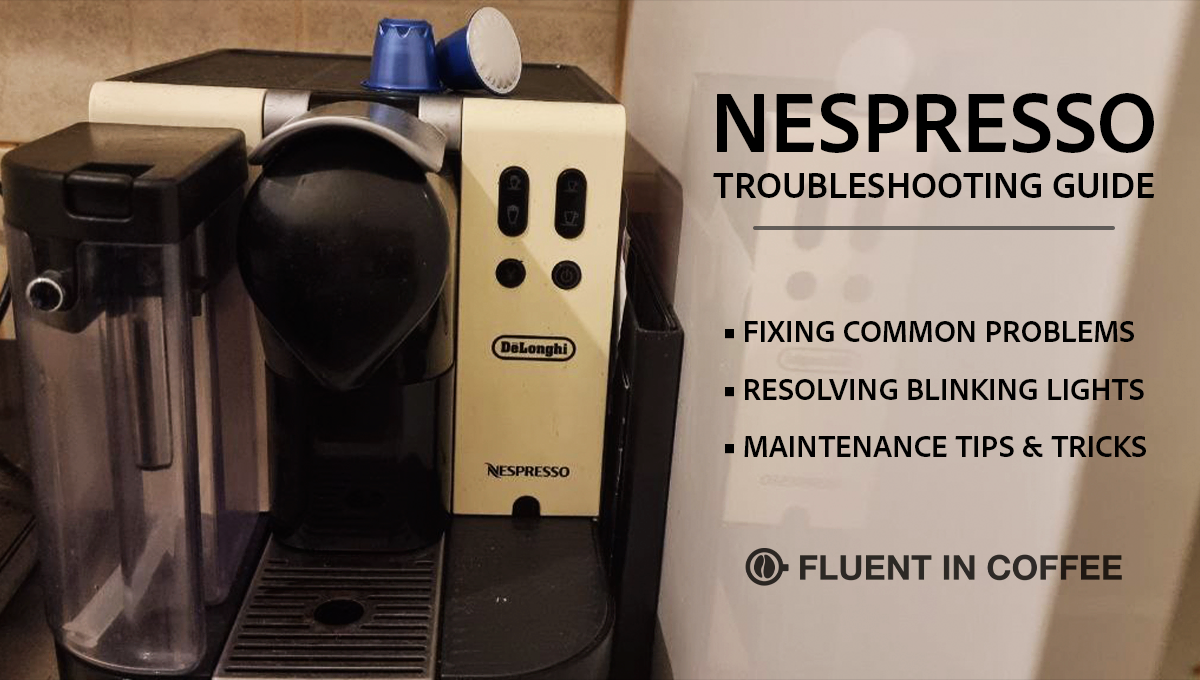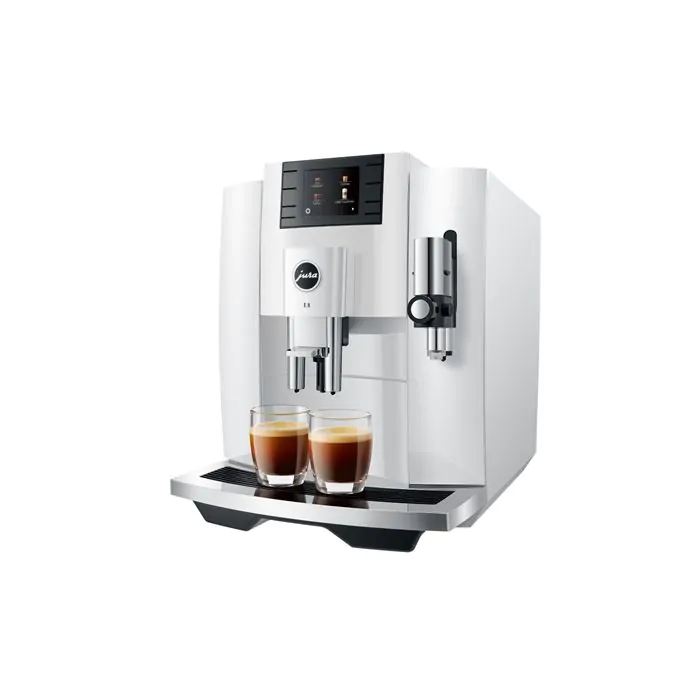Every owner of a Nespresso machine faces the question: “Why is my Nespresso machine not working properly?” now and then. But the answer is not always easy to find.
I have had my coffee machine for a couple of years, so I’ve been through a lot of Nespresso troubleshooting.
In this guide, I will tell you:
- How to fix common Nespresso machine issues
- How to resolve Nespresso blinking lights
- How to keep your machine in good shape
Let’s dive in!
Nespresso Troubleshooting: The Common Problems
Despite your best efforts, you most likely will run into an issue or two during your Nespresso machine’s life.
That’s the bad news.
The good news?
Most of the issues aren’t serious and are actually really easy to deal with.
In this section, let’s go over the most common issues you might see and how to solve them.
The machine has no pressure
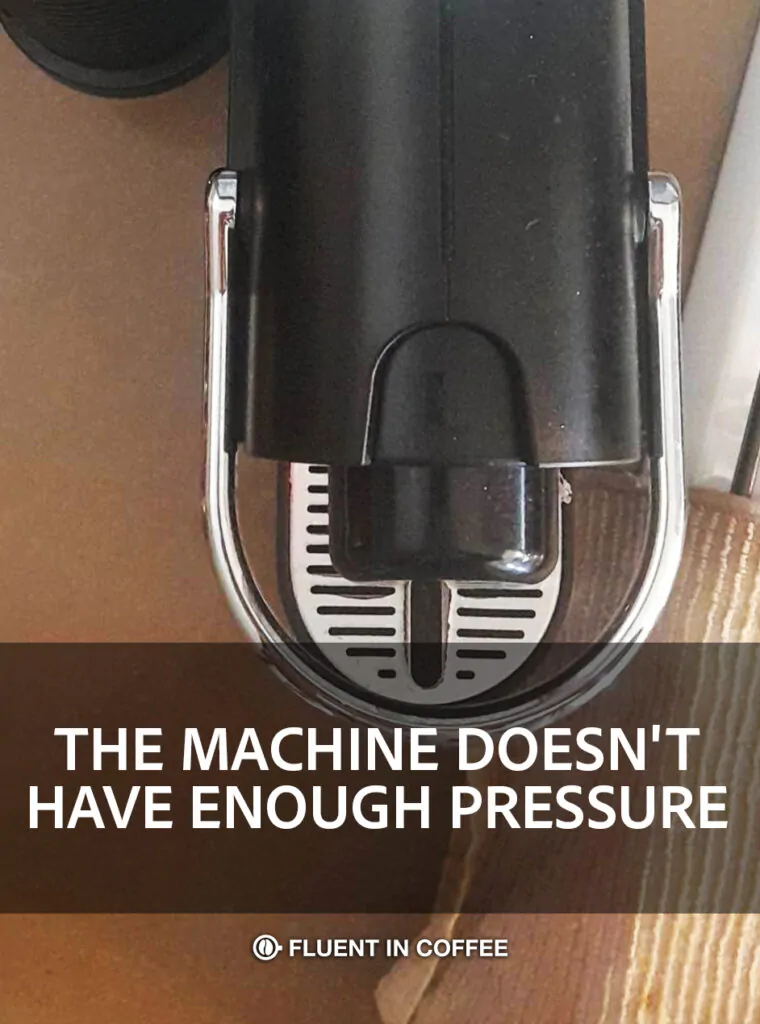
The most likely cause is?
Air in the system.
Air can get into your machine if you:
- Try to make coffee without enough water in the reservoir
- Open the machine before your coffee is fully finished
Luckily the fix is relatively easy:
- First, make sure your water reservoir is full.
- Next, turn your machine on and wait for it to heat up.
- Then open and close the capsule holder without putting a coffee pod in the machine.
- Lastly, push your machine’s biggest coffee button and let the cycle run completely.
- Repeat the last step two or three times or until your machine returns to normal.
The Coffee Tastes Strange or Too Bitter
If your coffee doesn’t taste as usual (or even tastes really bad), it most probably means one thing – clean your machine!
Different types of gunk, such as coffee residue and limescale, can get stuck in your machine. If you don’t clean and descale it regularly, it can start to affect the taste of your coffee. Even worse, it can stop your machine from working.
There is a difference between cleaning and descaling.
Descaling will remove the mineral build-up (limescale) from the machine. Now, you don’t need to descale your machine so often. Once in 4-12 months is enough.
However, you can run a cleaning cycle more often. This will remove coffee residue and other dirt from your machine.
Here’s how to clean your Nespresso machine:
- Take out any coffee pod that might be in the machine.
- Take a paper towel and clean the inside of the machine’s head.
- Empty the water tank, clean it thoroughly with soapy water, refill it with fresh water, and put it back.
- Wash the cup holder, drip tray, and capsule container and put them back in their places.
- Put a 34-ounce container under the spout.
- Close the head and lock the machine.
- Turn on the machine and wait until the light is steady.
- Start the cleaning cycle by pushing the button three times within two seconds. It’s usually the brew button, but check the instructions for your model in the manual.
- Wait about 7 minutes until the machine finishes cleaning.
To descale the Nespresso machine, you need to follow these basic steps:
- Remove any leftover capsules from the machine.
- Fill the water tank with a Nespresso descaling solution and 17 ounces of water.
- Place a 34-ounce container under the spout.
- Turn on the machine and wait until it heats up.
- Start the descaling cycle. Different models require different buttons to be pushed for descaling, so refer to the manual of your model.
- After the descaling cycle is finished, rinse the machine with a water-only cycle. You can run a few cycles to make sure there is no chemical residue.
- Wash all removable parts with soapy water (drip tray, water tank, capsule holder, etc.)
- Refill the water tank with fresh water and put it back in its place.
Coffee is not hot enough
Okay, I know that coffee temperature is a personal preference.
But still, sometimes your machine just won’t get your coffee hot enough.
What’s the answer?
That’s a little complicated.
There are really two things you can try to make your coffee hotter:
- Preheat your coffee mug
- Descale your espresso machine
If you put hot coffee in a cold or room temperature mug, the mug will sap heat away from your coffee. That means your coffee will cool down much faster than if your mug is already hot.
So, it’s as easy as filling up your coffee mug with boiling water, waiting for thirty seconds, and then dumping it out.
Descaling your Nespresso coffee machine is a bit more involved.
I would recommend following Nespresso’s instructions for how to descale your exact machine.
But the gist of the descaling process is basically a deep cleaning of the inside of your machine with a descaling solution. It helps your machine run smoothly.
The water is leaking
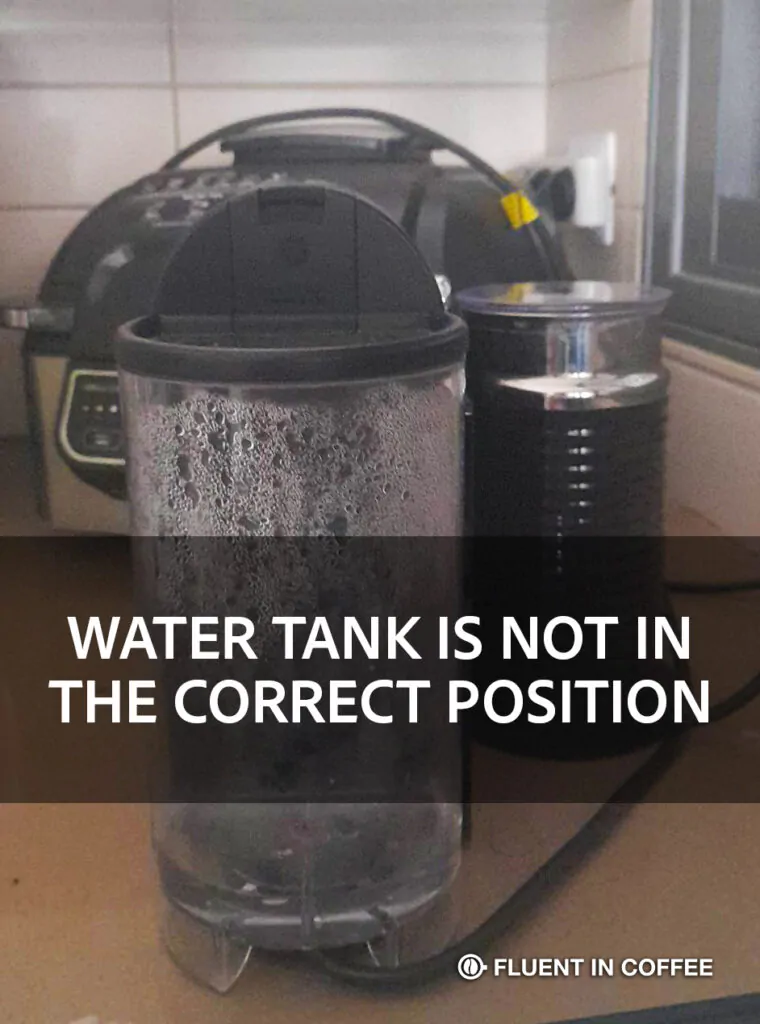
If your Nespresso machine is leaking, chances are the water reservoir isn’t properly positioned.
Luckily, this one is generally a pretty simple fix.
Simply take it out and put it back in, making sure you get it lined up properly.
Coffee is not coming out
This one can get a bit complicated.
But there are a few things you can do before starting to panic:
- Make sure your water tank is full and in the right position. Your Nespresso machine won’t make coffee if the water tank isn’t full or in the right spot.
- Make sure you have a fresh Nespresso pod in the machine and that the machine is correctly closed and locked.
- Perform a cleaning cycle following Nespresso’s instructions. (Nespresso recommends running a cleaning cycle every 300 brews anyway.)
- You might need to descale your machine.
I’ll say this:
I’ve been in situations with coffee brewers many times where I thought the machine was broken. Most of the time, however, something just wasn’t hooked up right.
Or I forgot to turn on the machine.
Keep in mind I’m a trained barista, so anyone can make simple mistakes with their machines.
That brings me to the next common issue.
Nespresso machine not turning on
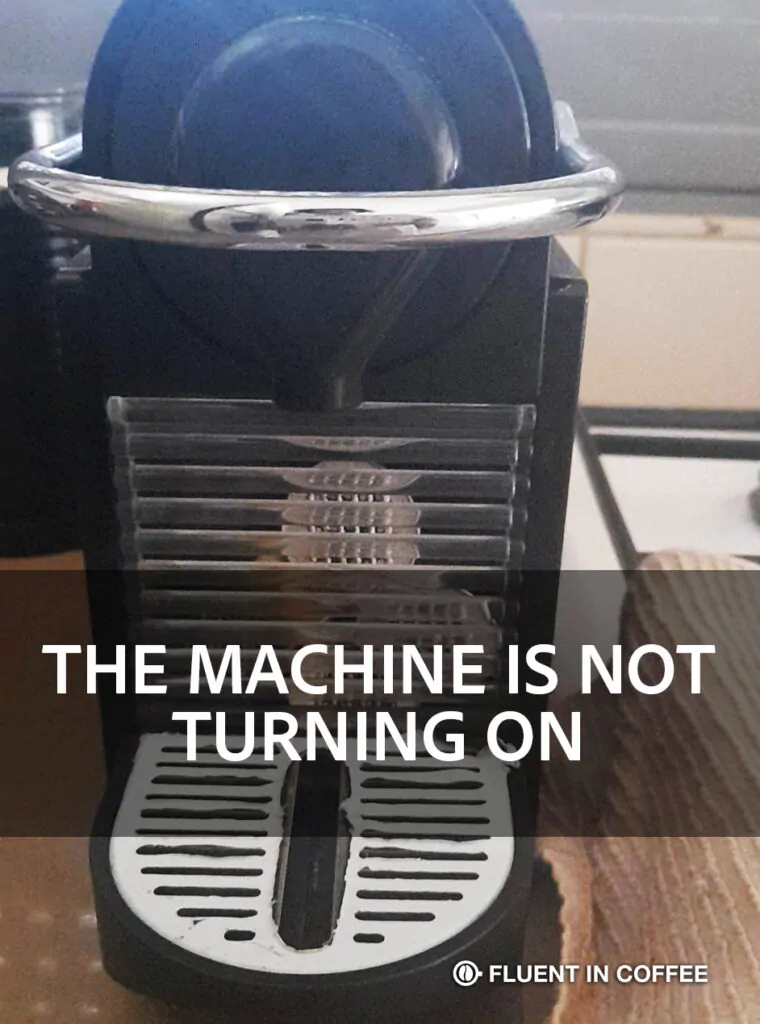
Nespresso machine not working?
First things first: check the machine is plugged in.
I know it seems obvious. But sometimes it’s the simple things.
The other thing to keep in mind is that Nespresso machines usually have a power-saving mode. This means that your machine will turn off after a set amount of time to save energy.
You’ll have to turn your machine back on a wait for it to heat up again if it is turned off in power-saving mode.
There Is a Leakage in Capsule Area
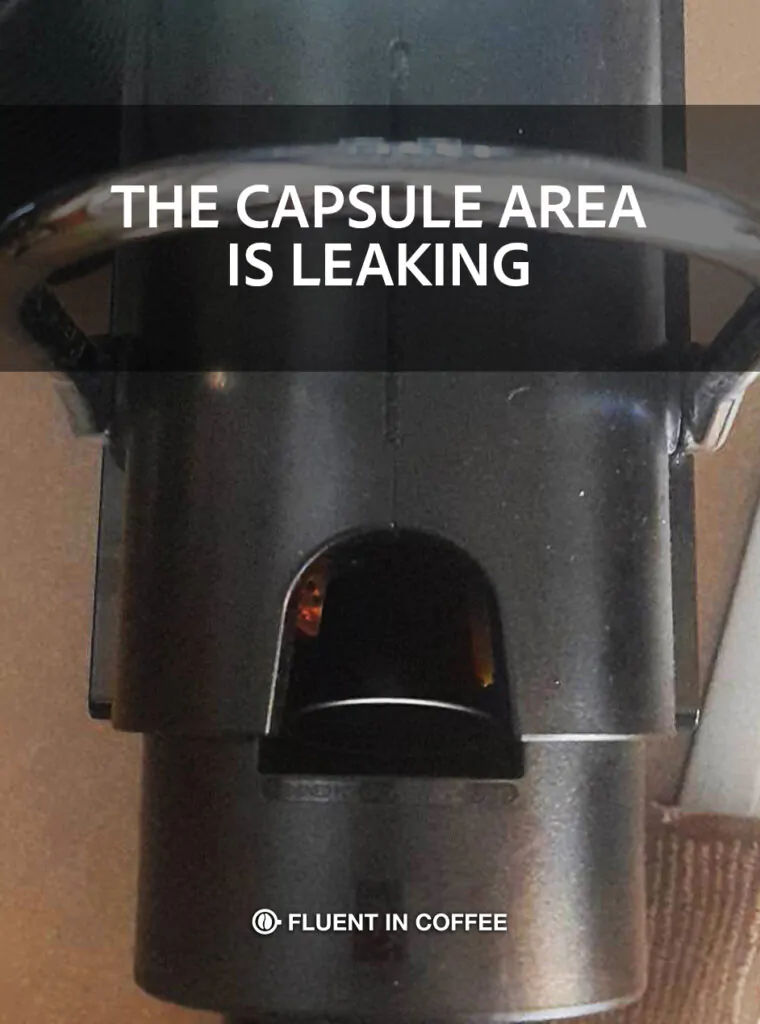
If the machine is leaking in the capsule area it can mean two things:
- the capsule is not placed correctly
- the grid plate is blocked
You should first check if the capsule is positioned properly in the capsule holder.
If all is in order, then the grid plate is blocked by coffee residue. The grid plate is a part of the machine with pyramid-shaped holes that pushes the capsule’s foil. It’s in constant contact with coffee, so the coffee particles can pile up. (It’s actually the dirtiest part of your machine!)
Luckily, it’s easy to clean. Just grab a toothbrush and scrub it. After that, rinse the machine with a water-only brew cycle.
The Capsule Is Not Pierced
If your machine is not brewing coffee, it might mean that the capsule was not pierced.
Now, this can happen because of a couple of reasons:
- The coffee capsule is orientated wrong: when the machine is not opened or closed all the way, the pod can get caught at the angle. To fix this, open the lever all the way, insert the new capsule, and close it properly so the capsule fall in its place.
- The lever is not pushed all the way: to make sure you have pushed the lever all the way down, you should hear the “click” sound.
- The punch needle is broken: the needle that injects the hot water can sometimes break. Unfortunately, the only thing you can do about this issue is to contact Nespresso customer care and replace the needle.
- The capsule is not compatible: Nespresso Original and Vertuo Line use different kinds of capsules. You should check if you are using the correct kind of capsule for your machine. Also, if you are using a 3rd party capsule, they sometimes can be bigger or smaller than the original. If that’s the case, the machine might not be able to pierce it.
- There is not enough pressure in the machine: if the machine has limescale build-ups, it might struggle to generate enough pressure. This can result in the machine not piercing the capsule. In this case, you should descale your machine ASAP.
The Coffee Is Pouring Too Slowly

If the coffee flow from your Nespresso machine is slower than usual (regular time should be 25 to 30 seconds) it can mean several things:
- The pour volume programming got messed up – do a factory reset
- Your machine needs cleaning or descaling – run a cleaning and descaling cycle
- The spout has a build-up of sediment – clean it with a paperclip and rinse the machine
- The grid plate is dirty – clean the coffee residue from the grid plate with a toothbrush
The Machine Stops Early and Doesn’t Pour Enough Coffee
If the Nespresso coffee machine stopped working prematurely, leaving you with only a bit of coffee in your cup, this could mean three things:
- There is not enough water in the water tank, so you need to refill it.
- The programming got messed up, which requires a factory reset.
- The machine has a blockage, so you should do a cleaning cycle.
I know. This is a lot of guessing. But usually, your machine will let you know exactly what the problem is. It will do so by alerting you with a flashing red, green or orange light, depending on the model.
I dedicated the next section to Nespresso blinking lights and their meanings.
Resolving Nespresso Blinking Light
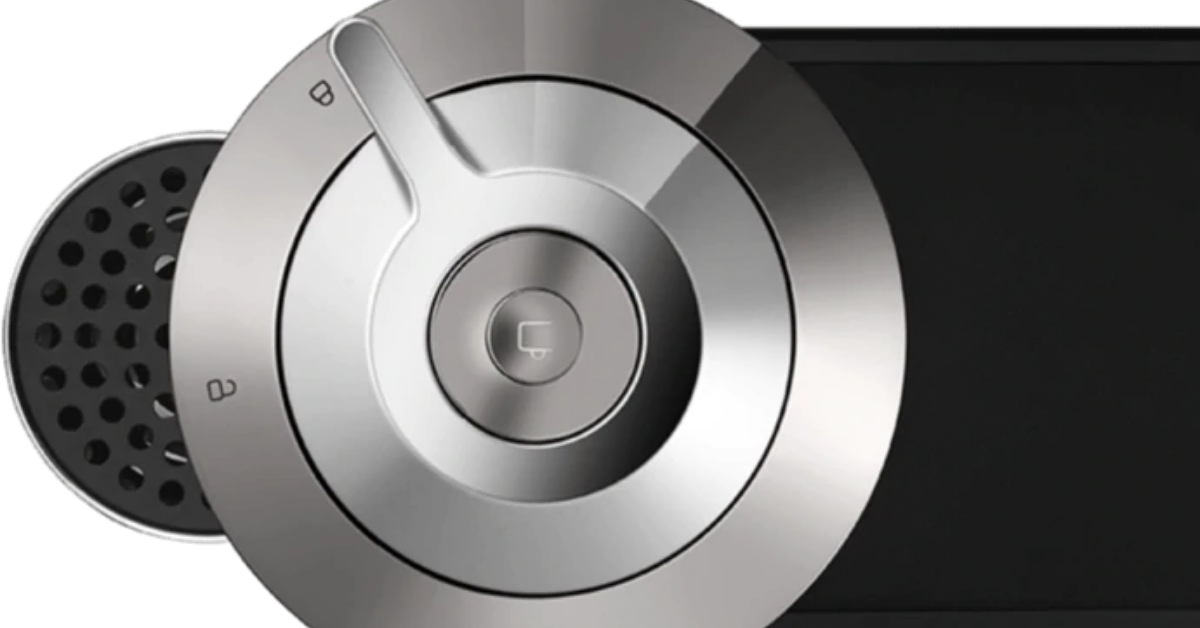
The main way your Nespresso communicates with you is through the light.
But deciphering what all the blinks and colors mean can be confusing.
Let’s break down the different lights you might see on your Nespresso coffee maker and explain what each one is and how to fix it.
Steady light or blinks once per second
This light means there’s an error in the Nespresso coffee machine.
Don’t panic yet.
Usually, you can unplug the machine, wait 15 seconds, and then plug it back in.
If doing this doesn’t help, then it’s probably best to contact Nespresso support.
Did you know?
Nespresso has different support numbers for each line of machines. For a VertuoLine machine call 877-964-6299. For an OriginalLine machine use 800-562-1465.
Blinks twice then steady green
Two red blinks then steady green is really simple:
Refill your water tank!
Trying to make coffee without enough water in the tank can lead to air in your machine.
Air in the system can reduce pressure, clog your machine, or give you a pretty off-tasting cup of coffee.
Pulse down or fade out
Slow down there, coffee drinker!
A pulse down or fading out red light means you’ve used your coffee maker too much in too short a time.
Take a step back and let your machine cool down before making another cup of coffee.
TIP:
If this happens a lot, you might want to consider the Nespresso Vertuo Next. It can brew 18 oz carafes instead of a single mug at a time.
Blinks red light twice then blinks orange
This happens when running a special function and something goes wrong.
Usually, ejecting the Nespresso capsule and restarting the function is enough to fix the issue.
If you’re emptying the system and you see these lights, then remove the water tank.
If the issue persists, it’s probably best to contact Nespresso Support.
Steady light with half red and half green
A steady half red, half green light means you’re machine is just about ready for a descaling.
This light isn’t urgent, but it will be soon.
It’s best to refer to Nespresso’s instructions on how to properly descale your machine.
Blinks three times then steady red
Something is stopping the machine head from getting in the right position to brew coffee.
Try emptying the used capsule container and then pushing the lever down.
Also, you can look for other obstacles around the machine head.
FAQ
Okay, the last few items. These are a few quick things you might need to know to help keep your Nespresso machine running smoothly.
How do I reset my Nespresso machine?
When your machine is off, press and hold the Lungo button for 5 seconds. The light will blink fast three times.
Your machine is then reset to factory settings.
How do I know if my Nespresso machine needs descaling?
Here are five ways to know when you should descale:
- Your coffee isn’t as hot as it normally is
- Your coffee pours slower than normal
- Your coffee tastes dirty or charred
- Your machine is making strange noises
- You see a steady half-green, half-red light when your machine turns on
How do you unclog a Nespresso machine?
Nespresso has special cleaning capsules you can use to clean your coffee maker. These are generally the best way to unclog and clean your Nespresso.
Nespresso recommends cleaning your machine every 30 brews or at least once each month.
Conclusion
Unfortunately, this isn’t an exhaustive list of all the things that could go wrong.
I would recommend reading through your machine’s manual. You can also contact Nespresso Support with any problems that seem too complicated to fix without help.
But this list does give you a good starting point for troubleshooting on your own.
Good luck with your Nespresso machine!
Having trouble with a Nespresso milk frother? Check out our article and find out why is your Nespresso frother not working and how to fix it.

